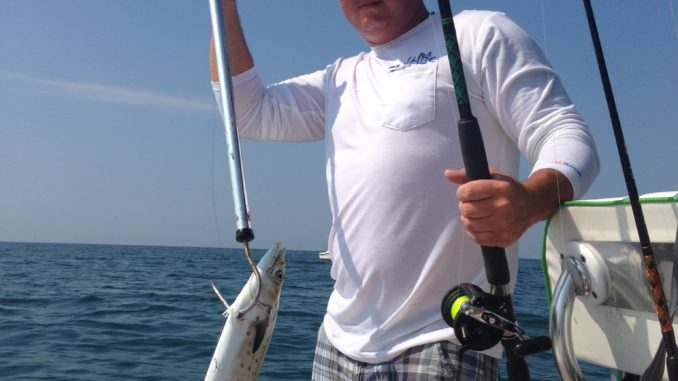
Catching Spanish mackerel can seem very easy during the spring and summer when fish are mauling a school of menhaden or glass minnows. Spanish feed in packs and will quickly send a school of baitfish in a tizzy when the carnage begins. However, the seemingly haphazard method of attack may have some sort of order, and the order begins with the ocean currents.
Just about any water body is subject to current that can be caused by changes in the tide and wind. Typically, currents along the beach will follow a longshore drift, heading either north-south or south-north. Baitfish will ride these currents and generally travel in the same direction. Predators get acclimated to the way baitfish travel and may get discouraged when their potential dinner is moving in an unnatural way.
Capt. Jason Burton frequently catches more fish pulling his lures along a certain current path.
“The fish are accustomed to setting up on the structure and will feed in a certain direction,” he said. “Pay attention to the direction you are getting the strikes, whether with or against the wind and current direction.”
After figuring out which direction is the most productive, he will pull up his lines, pick up and run back to pull the same drift again.
“It takes a little more effort this way, but we will stay in the fish much longer, and that makes it worthwhile,” he says.
Presentation is everything in this business. Sometimes, the slightest change in direction or speed will alert these fish of a problem.




Be the first to comment